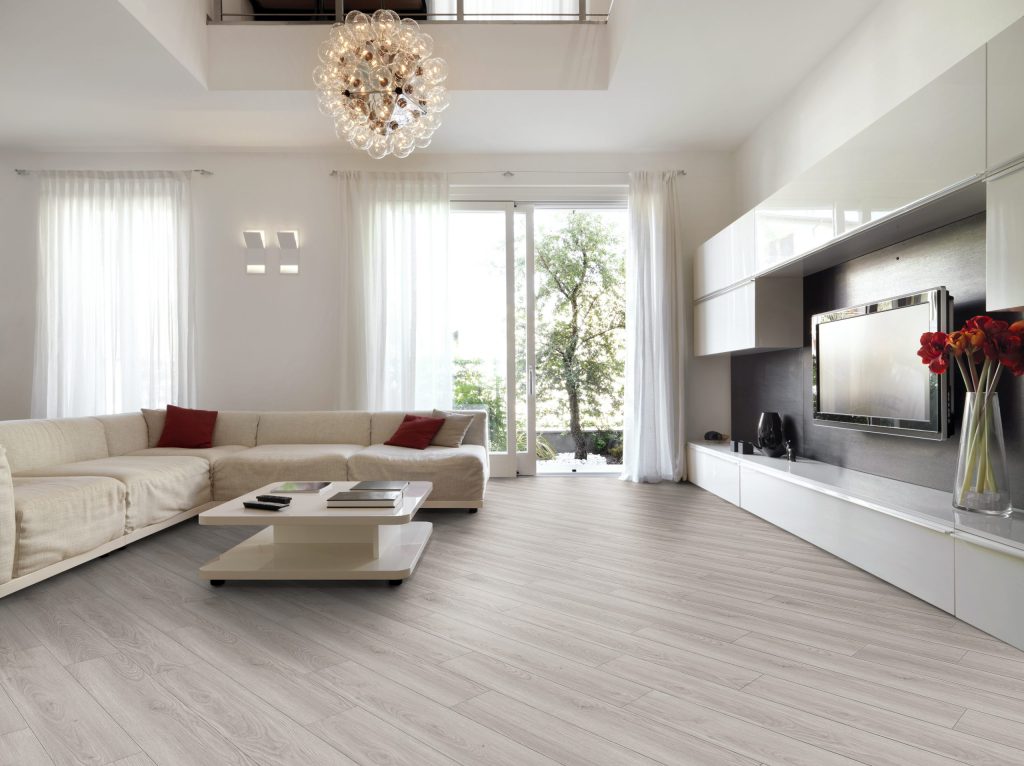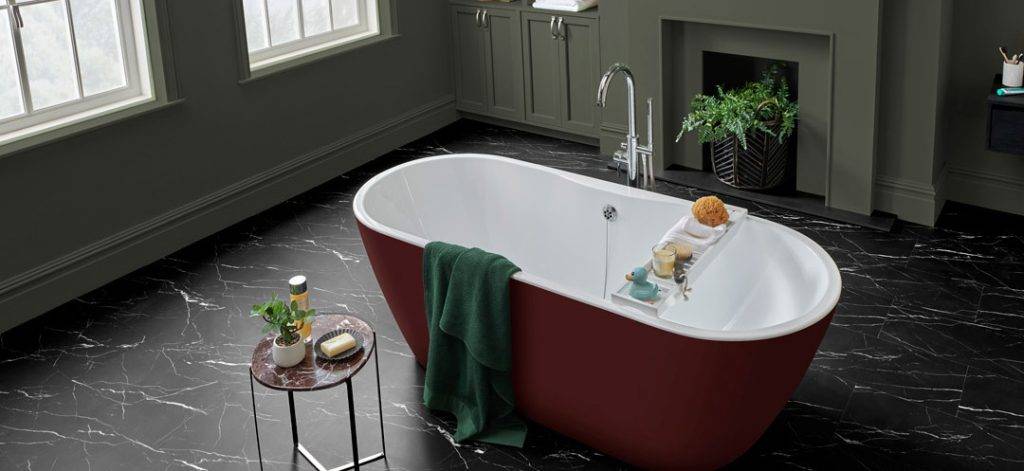LVT flooring is perfect for busy families like yours. It’s durable, easy to clean, and can withstand the wear and tear of daily life.
Cleaning LVT flooring doesn’t have to be time-consuming. Once you know a few simple steps, you can keep your flooring looking its best even with a busy family schedule. With the right technique it’s one of the easiest chores you can do around the house, though you still need to be careful about what you clean it with so as not to cause any permanent damage to it.
What Exactly is LVT Flooring?
Luxury Vinyl Tiles, or LVT flooring, is a product that has the appearance of real wood, stone, tile or even geometric shapes but is made up of several flexible and thin layers. LVT flooring is perfect for busy families as it’s easy to clean, durable and withstands daily wear and tear.
PVC Click and SPC LVT flooring is a great option for the accomplished DIYer, or those looking for an alternative to costly wood floors. The knowledge and experience of a trained fitter are always recommended with glue-down LVT floors.
Why is LVT flooring so popular?
Luxury vinyl floor tiles are a popular choice for many areas of the home, and different variations available suit certain rooms better. However, they are generally warmer to the touch, and more sound-insulating than normal ceramic or porcelain tiles.
They are much more durable than real wood and inherently scratch and wear-resistant due to the protective coatings used to maintain the look and feel of the wood grain, stone or porcelain finish. If you love the natural look, luxury vinyl tiles are a more cost-effective and low-maintenance option than natural materials.
Cleaning luxury vinyl flooring is relatively simple; read on for all the information and pro tips you need to keep your LVT flooring in pristine condition.
How do you clean LVT flooring?
LVT is long-lasting and hardy and is relatively scratch and stain-resistant. However, if you spill something, you should act quickly. Otherwise, you risk damaging your new floor.
To clean LVT flooring is simple. Flooring experts recommend cleaning or vacuuming your floor regularly to remove dry dirt, which can produce fine scratches. Use an LVT Floor Care Kit, or products recommended by your flooring manufacturer, to thoroughly clean and maintain the finish of the floor.
The Luvanto Floor Care kit, for example, works exactly like a standard cleaner to remove dirt, but it can also eliminate minor surface scratches and add a matt, anti-slip film to your floor with each clean.
Suppose you don’t have the manufacturer’s recommended cleaning product. In that case, it is still possible to clean your LVT correctly using items you might have in the home already, like suitably diluted white vinegar and a microfibre cloth/mop.
STEP 1: REMOVE ANY LOOSE DIRT
Dirt and debris can cause scratches in your flooring. Make sweeping with a soft broom, damp mop or damp cloth, vacuuming, or dust mopping a regular practice in high-traffic areas. Cleaning your flooring daily will protect the finish and keep it clean and hygienic.
Remove the beater bar or choose a model without one when vacuuming, as this portion of the vacuum cleaner might damage the surface.
Step 2: Use the proper cleaning supplies
Many commercial cleaning products will have details on what flooring types they are compatible with on the label. It’s a rule of thumb, however, to avoid solutions with abrasive materials.
Basic household items like apple cider vinegar, white vinegar, or dishwashing soap can also work, provided you adhere to the following tips:
Apple cider vinegar
Apple cider’s acidity can eliminate grime and debris build-up, allowing you to remove stains before they have a chance to set in. That being said, be very careful with the stronger variants, as it may discolour the floor.
White Vinegar
White vinegar is often used as a floor cleaner for many types of flooring, and LVT is one of those.
Washing up Liquid
Adding a few drops to your cleaning solution will enable you to clean a floor just fine.
Microfibre cloth
To clear up standard water efficiently, a microfibre cloth may be in order. It’s important to not let water stand despite LVT’s water-resistant properties due to the ability of water to seep through joints into the floor beneath over time.
If you’re using washing-up liquid, mop your floors a second time with clean water.
Step 3: Make your cleaning solution
Prepare your solution using any of the non-abrasive cleaners listed above.
Mix a small amount of your chosen cleaner with a bucket of water, then soak the microfibre mop inside. Once you wring it dry, you will be able to effortlessly clean your floors, though we recommend rinsing in hot water periodically.
If you need to disinfect your floors, then using white vinegar in the same fashion is recommended, provided it’s not too powerful, as that could degrade the surface.
Too many solutions will result in an overload of suds, which compromises cleaning.
Step 4: Thoroughly rinse your flooring
Commercial cleaners usually don’t require cleaning unless otherwise specified. If there is stickiness post-cleaning, try using some white vinegar and water to lightly smooth it out.
Step 5: Difficult stains
LVT has anti-stain properties, but some difficult stains can still find their way on. Baking soda reputedly helps remove practically any stain.
Create a paste by mixing two teaspoons of baking soda and one of water, then apply it to the affected area. After that, it’s a simple matter of using the microfibre cloth, before rinsing and allowing the area to dry.
Cleaning luxury vinyl tile flooring: do’s and don’ts
Here are some tips to keep your vinyl floors as clean as possible.
- SWEEP REGULARLY AND USE DOORMATS
Sweeping and vacuuming on a routine basis is one of the best ways of keeping your floor as good-looking as possible, but it’s almost outright required in high-traffic areas. Ensure you have a doormat at your front door to wipe off your shoes and ensure your guests do this too – as LVT can become damaged from the small debris sticking to the bottom of your shoes.
- AT ALL COSTS, AVOID CHEMICALS.
Bleach and ammonia can discolour and damage several layers of your LVT, and should be avoided at all costs. If any tiles are damaged, they can easily be replaced without uprooting the entire floor – but you’d be better off not allowing it to come to that in the first place.
The best cleaning agents to use are non-abrasive options.
- MAKE USE OF FLOOR PROTECTORS
Heavy furniture can damage your floor, especially if they’re shifted whilst on top of it. It’s for this that we recommend buying felt pads for your more cumbersome furniture and appliances.
- LUXURY VINYL TILE FLOORING SHOULD NOT BE STEAM-CLEANED
LVT has a lot of resistance, from scratch to moisture protection. However, steam is still able to damage the floor, making steam-cleaning via a steam mop an unviable method.
Summary
If you make sure to use the right preventative measures (such as doormats and felt pads), cleaning your LVT is a routine and simple task that doesn’t require a lot of upkeep for a busy family like yours. Now you know what to do, and what not to do – with the right care, your LVT will last for years to come.
Investing in the right care products, such as the Luvanto Floor Care, Cleaning and Maintenance kit, can help you keep your flooring in the best condition and save you money on future flooring replacements.









